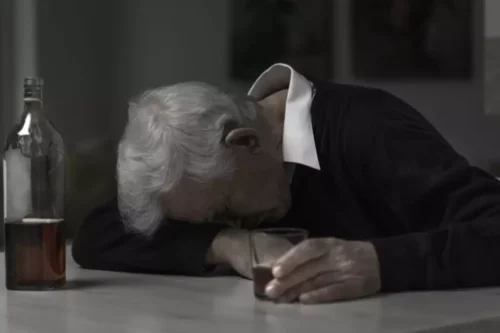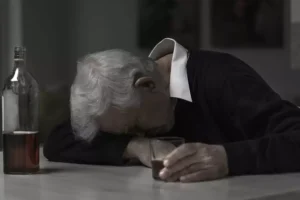Cognitive Dissonance Examples and Effects
Overall, these measures were taken to ensure the data’s quality and accuracy and promote high participation rates. In this study, 425 questionnaires were collected from July cognitive dissonance addiction to October 2022 through an online questionnaire platform (Questionnaire Star, a Chinese professional platform that provides service of online questionnaire survey), and 11 invalid questionnaires were…

Overall, these measures were taken to ensure the data’s quality and accuracy and promote high participation rates. In this study, 425 questionnaires were collected from July cognitive dissonance addiction to October 2022 through an online questionnaire platform (Questionnaire Star, a Chinese professional platform that provides service of online questionnaire survey), and 11 invalid questionnaires were excluded. A total of 15 questionnaires were excluded, and finally, 391 valid questionnaires were collected, with the effective rate of 92%.
- Adolescent participants in CA, USA, engaged in semi-structured interviews about how they perceived and resolved discrepancies in messages about substances, with particular attention given to their observations of messaging on social media.
- It occurred to Festinger that a social psychological theory needed to be broader than social comparison in order to accommodate the extraordinary number of circumstances in which people felt driven to avoid and reduce inconsistency.
- Within social psychology, the study made clear that dissonance theory was not the same as previous balance theories.
- This internal conflict is resolved when the fox decides that the grapes do not look delicious after all.
- Someone spiraling into addiction knows that what they are doing isn’t good for them on some level.
- Trained therapists and addiction specialists can help individuals navigate the complex terrain of their thoughts and behaviors, providing tools and support to resolve cognitive dissonance and move towards recovery.
How does cognitive dissonance affect the recovery process for addicts?
- Cognitive dissonance, defined as the psychological discomfort experienced by a person who holds two or more contradictory beliefs or values 95, has been found to be a significant predictor of user discontinuous usage intentions in prior research 43.
- In order to make this case, I present evidence for the revision of dissonance theory that Fazio and I called the New Look Model of Dissonance (Cooper & Fazio, 1984), which I believe more fully incorporates the findings and limitations of dissonance.
- The items in different constructs should not be highly correlated, and if they are (0.85 or higher), it means that these items are measuring the same thing, which often happens when the definitions of the constructs overlap excessively.
We had people engage in a counterattitudinal essay writing task and told half of them that any arousal they might be experiencing was due to the pill. We reasoned that if attitude change is based on the arousal caused by inconsistent cognitions, then those participants who could blame their arousal on the pill would not be motivated to change their attitudes. Only those who thought their arousal was due to the inconsistency between their attitudes and their essay-writing behavior should change their attitudes, for that would be the way to reduce their arousal.
Reducing the Importance of the Conflicting Belief
- Self-efficacy has a moderating effect on the relationship between user addiction and cognitive dissonance among users of the pan-entertainment mobile live broadcast platform.
- This study suggests that youth exposure to positive portrayals of substance use on social media has exacerbated the gap between prevention messages and what teens believe and observe.
- Moreover, Qaisar et al. 92 revealed that user addiction had a stronger negative effect on discontinuous usage intention among users with low self-efficacy towards mobile applications.
- Adolescents identified a mismatch in seriousness of risks, messages and strategies between abstinence-oriented prevention efforts and what teenagers observed in their social contexts.
Cognitive dissonance is the discomfort Alcoholics Anonymous you feel when you have two contradictory beliefs or values. Examples of cognitive dissonance include a smoker who knows cigarettes are dangerous, a company that doesn’t follow its own code of ethics, or a person who avoids speaking about a past trauma while still dealing with it in the present. Addressing cognitive dissonance is not just about aligning thoughts and actions—it’s about reclaiming your life from the grip of addiction. It’s about rediscovering who you are beneath the layers of denial and rationalization.
Strategies for Tackling Cognitive Dissonance in Recovery
Rather than creating change as a direct function of its magnitude, reward seemed to have had the opposite effect in the dissonance situation. People who made statements for large rewards were less likely to believe their statements than people who acted for small rewards. This seemed so antithetical to the existing zeitgeist that it led to a flurry of important work trying to show that Festinger & Carlsmith’s study produced its results from flawed operations (Chapanis & Chapanis, 1964; Elms & Janis, 1965; Janis & Gilmore, 1965; Rosenberg, 1965).
- The relationship between self-efficacy and information overload has been extensively studied in prior research.
- Becoming aware of how conflicting beliefs impact the decision-making process is a great way to improve your ability to make faster and more accurate choices.
- At the beginning of each interview, the interviewer emphasized that we value participants’ perspectives and any experiences they want to share are important to us.
- Almost half of these posts were generated from personal, rather than commercial, accounts.
- The results of other themes, which are specific to nicotine vaping, are published elsewhere 34.

She has a strong work ethic and it’s not unusual for her to be up at the facility at 2am or on the phone all night helping guide our staff on how to best manage whatever situations come up. Is an accredited drug and alcohol rehabilitation program, that believes addiction treatment should not just address “how to stay sober” but needs to transform the life of the addict and empower him or her to create a more meaningful and positive life. We are dedicated to transforming the despair of addiction into a purposeful life of confidence, self-respect and happiness. We want to give recovering addicts the tools to return to the outside world completely substance-free and successful. Harmful and painful addictive behaviors require a maze of lies, distortions, and psychotic denial to fend off the natural corrective consequences of cognitive and behavioral dissonance resulting from addiction.

In today’s digital environment, where young people are frequently exposed to positive portrayals of substance use, this study solicited adolescents’ perceptions of messages they receive about substance use online and offline. Interviews with adolescents in CA, USA, yielded insights into the differences in messages posted by formal prevention sources (i.e. school-based drug education and PSA) and by peers on personal social media accounts. Participants reported that peers shared overwhelmingly positive portrayals of substance use, while prevention sources only portrayed the negative consequences of substance use and urged abstinence. The discrepancy between the two sources seemed to undermine prevention credibility, perceived effectiveness and relevancy.


